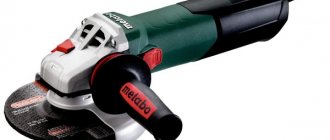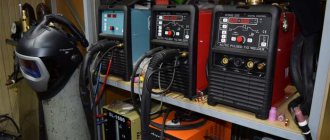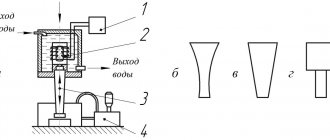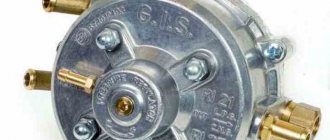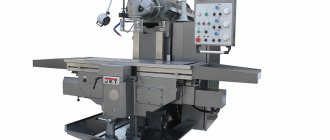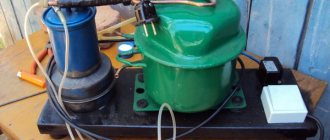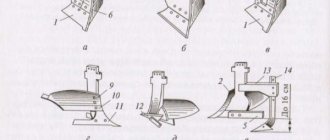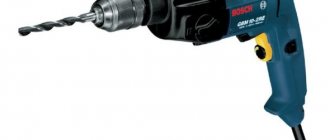A furniture stapler is a fairly universal tool with which you can not only perform furniture upholstery procedures, but also a number of other construction operations.
Today, there are several types of similar equipment, differing in their operating principles:
- pneumatic,
- electric,
- manual.
Pneumatic staplers are used in industry, and electric and manual staplers are used in everyday life. Models belonging to the latter type are the most common in the furniture industry due to their mobility and ease of use. Let’s use this example to look at the principle of operation, operation and repair of furniture staplers.
However, before moving on to this procedure, I would like to say a few words about staples and their varieties.
How to use a furniture stapler: device, operation, tips
A furniture stapler is a fairly universal tool with which you can not only perform furniture upholstery procedures, but also a number of other construction operations.
Today, there are several types of similar equipment, differing in their operating principle:
- pneumatic,
- electric,
- manual.
Pneumatic staplers are used in industry, and electric and manual staplers are used in everyday life. Models belonging to the latter type are the most common in the furniture industry due to their mobility and ease of use. Let’s use this example to look at the principle of operation, operation and repair of furniture staplers.
However, before moving on to this procedure, I would like to say a few words about staples and their varieties.
Operating principle
Depending on the type of drive, tools are divided into electric and pneumatic.
Electrical
These devices are widely used in everyday life. Working with an electric stapler is a pleasure; you just need to connect the device to the power supply. However, an electrical device, in comparison with its manual counterpart, is much more expensive. It is profitable to buy it for professional craftsmen who are constantly repairing furniture. Naturally, it is not profitable to buy such a model for a one-time repair. Manual models are suitable for household use.
Pneumatic
These models are not used in everyday life, since their use requires a compressor unit. You can buy your own compact compressor, but how quickly such a purchase will pay off is the question. Therefore, buying a pneumatic device is beneficial for companies producing and professionally repairing furniture.
How to refill a mechanical stapler?
Furniture staplers are divided into three types:
- mechanical;
- electrical;
- pneumatic.
It is necessary to take into account the specifics of refilling the tool, which directly depends on its moving mechanism.
The design of such staplers is not much different from each other. They consist of a lever handle, through which mechanical pressure is applied, and at the bottom of the tool there is a metal plate that opens the receiver. This receptacle can accommodate staples.
The mechanical type is driven by the applied force of the hands, which indicates their weak power. The model contains a small number of staples. With their help it will not be possible to nail hard and thick structures. However, such assistants are light in weight and compact in size, so they will be needed for processing hard-to-reach places. The mechanical type of stapler is available due to its low price, is compact for carrying and easy to maneuver.
To insert staples into a mechanical stapler, you must follow these steps:
- To refill the stapler, you must first open the plate. To do this, you should take it on both sides with your thumb and forefinger, and then pull it towards you and down a little. Due to this, the metal tab located on the back of the plate will be pressed out.
- Then you need to pull out a metal spring, similar to the one found in an ordinary office stapler. If the staples are still loaded, they will fall out of the stapler when the spring is pulled out.
- The staples must be inserted into the receiver, which looks like a U-shaped hole.
- Then the spring is returned to its place and the metal tab is closed.
After completing these steps step by step, the tool will become suitable for further use.
Possible mistakes
There are several of the most common, frequently encountered errors and problems that accompany the operation of a furniture stapler. The tool may fire multiple staples at once, or not at all, and may damage upholstery material. Errors are due to the following reasons:
- incorrect pre-adjustment of the adjusting screw when performing work with traditional mechanical models of the device;
- neglect of the rule of advance marking of places for installing staples, which allows for high-quality and uniform tension of upholstery material;
- lack of fixation of the upholstery with a free hand in order to prevent the material from moving during operation with a stapler.
It is important to control the number of staples inside the “magazine” of the tool, and also be sure to secure the handle with a safety lock immediately after finishing work. This will prevent spontaneous or accidental shooting.
It is strictly forbidden to work with a faulty tool. If necessary, the problem is diagnosed, and the firing pin that has exhausted its life is also periodically replaced.
Application area
Using this unique tool, you can achieve high results in the process of performing work such as:
- high-quality assembly of packaging boxes and frames;
- furniture drapery;
- stitching perforated corners;
- installation of insulation, membranes and durable film coatings;
- fastening of various structural parts and upholstery;
- using a stapler you can firmly fix carpets;
- ideal for seaming drywall;
- cable laying;
- it is possible to cover various surfaces;
- using a stapler you can attach paintings or canvases to wooden frames;
- suitable for installing bitumen and roofing felt tiles;
- using this tool you can attach special glazing beads to window frames;
- thanks to the use of the device, you can strengthen a greenhouse or greenhouse;
- The assembly of floors made of tongue and groove wood goes well;
- the stapler can firmly join frames of light sheet materials, for example, plywood, chipboard, foil, OSB, tin;
- and much more.
For simple work , a manual stapler is ideal, while for large volumes it is best to choose an electric or pneumatic version of the device.
Pneumatic construction staplers
Differences from mechanical and electrical devices:
- Pneumatic staplers are used for serious work on an industrial scale. They are distinguished by high speed (50-60 beats per minute) and power of charge delivery.
- Long staples and nails may be used.
- The weight of the gun is comparable to an electrical unit operating from an outlet.
- Another device design. There is no spring here; the charge is clogged by the force of air compression.
- Disadvantages: dependence on electricity and compressor. Such instruments can be considered stationary.
- When purchasing, you need to know the pressure for effective operation. The minimum value for pneumatic staplers is 4, the standard is 5-6 bar.
- The cost of devices is much higher than their electrical and mechanical counterparts.
Impact mechanism repair
Any tool can fail. Having determined the essence of the breakdown, in most cases it can be fixed on your own.
Breakdowns and causes:
- The paper clips do not fire or they bend. In this case, the spring could break, there was a problem with the hammer, or the circuit board of the electric tool could fail.
- Consumables get stuck. This occurs if the magazine is dirty or the user loaded it with staples of the wrong size or with an obvious defect.
- The staples do not bend completely or slightly. The stapler may have suffered physical wear or pinching of the spring. The user may have configured the tacker regulator incorrectly.
- Shoots two staples at once. The reason may be deformation of the firing pin or wear of the striker.
Stapler repair is carried out thanks to:
- replacing the spring;
- selecting staples of the right size;
- adjusting the impact force;
- cleaning the instrument;
- lubrication of the impact mechanism.
Often repair work does not require much time and large financial costs.
Preparing the tool for work
In our case, a mechanical stapler will be used to attach the foam rubber and upholstery fabric to the bench seat. To do this, you need to choose the right fasteners . Depending on the thickness of the foam rubber, choose brackets that, when fastened, will grip the material itself and the base. It is better to take large ones, 14 - 16 mm in size, so that the material is securely fixed. But remember that the size of the staples should not exceed the maximum allowable for the tool you are working with. Otherwise, you won’t be able to insert them into the magazine, and if you do, there is a high probability that they will get stuck.
The choice of fasteners for nailing upholstery depends on what material you will use:
- For velvet, flock, cotton or linen, you need small staples, 4–6 mm in size (they will not damage the thin fabric and will fix it well).
- For denser materials, such as leather, suede, microfiber , staples measuring 8 - 10 mm are suitable.
Remember that it is better to buy branded consumables . After all, low-quality fasteners can damage the product or cause damage to the tool itself. Original staples will not get stuck in the stapler, will not break or bend, they fit perfectly into the material the first time, so they are used very economically.
Remember your safety! When working with sharp staples and nails, use personal protective equipment . Be sure to wear gloves so that if fasteners accidentally fly out, your hands are protected. Also, this will help prevent your palm from slipping, which is very important when carrying out such painstaking work as upholstery.
Characteristics and types of furniture brackets
The main indicator that is taken into account when choosing a bracket is its depth. Depending on the nature of the work performed, this indicator can vary from 4 to 14 millimeters.
So, for example, in order to carry out the procedure of upholstering furniture with fabric, a staple with a depth of 8 millimeters will be sufficient, while for fixing thicker materials, a staple with a greater depth should be selected.
Also, depending on the overall dimensions, staples are divided into the following types:
- 53 - is the most common. Staples of this type have a width of 11.4 millimeters and a thickness of 0.7 mm. The depth of this fastening element varies from 4 to 14 millimeters;
- 140 – having the following characteristics: width – 10.6 millimeters, thickness – 1.2 mm, depth – similar to the previous type;
- 36 – this marking means that the stapler can shoot staples that have a semicircular shape and are mainly used for cable installation;
- 300 - These are special nails intended only for the stapler.
When choosing a bracket, you should also take into account the structure of the material from which it is made.
Safe work techniques
Using a mechanical stapler.
By following safety precautions when using the device, you will avoid unnecessary injury. And the device will last longer:
- Before replacing staples, you need to put the tool on safety. This way he won't shoot by accident.
- Do not point the stapler at yourself or other people or animals.
- When transporting or storing the device, always switch the safety switch on.
- The tool can only be used in a sober mind. Persons in a state of intoxication are prohibited from handling a stapler.
- The work place should be well lit.
- Care must be taken to ensure that staples hit metal surfaces to avoid rebound. It is important to use special glasses to prevent the charge from flying into the eye.
- If the fastener is stuck in the product and is not completely clogged, you must carefully remove it.
- If small parts are used in the work, they need to be clamped in a vice. Driving staples into small surfaces directly in your hand is very dangerous.
- During work, the body position should be natural, clothing should be comfortable, and the sole should not slip.
When working with an electric or pneumatic stapler, you must follow the safety rules described for mechanical tools. More important:
- An electric stapler cannot be used indoors if there is a risk of explosion;
- you need to make sure that the switch on the device is off before plugging the cable into the outlet;
- the device body, electrical cable and plug must be undamaged;
- The power tool cannot be used outdoors during rain and snow, or indoors in high humidity;
- there should be no people or animals in the work area;
- all components of pneumatic tools must be in good working order and not damaged;
- During operation, the power cable must not come into the worker's area.
Mechanical, electric or pneumatic staplers are easy to use. But it is important to use the tool correctly. You need to charge it with fasteners with the markings indicated for your model. It is also necessary to adjust the mechanism for the required force of driving in staples. The main thing: follow safety rules when using. Careful handling and careful use are the key to productive work with any stapler.
Video “Master class on replacing staples in a stapler”:
open the box of staples, take a batch of staples, open the stapler, insert the staples, pointy ends down.
I don’t know if the procedure for inserting staples is the same in all staplers, but I just looked at my stapler and can write this:
- Open the stapler
- Pull the spring device that held the brackets in position downwards,
- Insert the brackets into the space provided (so that you get the letter P standing on a support, and not upside down),
- Slowly return the spring to its place and it will rest against the brackets.
- Close the stapler.
A construction stapler is a multifunctional mechanism. It is used when it is necessary to connect identical or different not particularly hard materials to each other, for example, plastic, wood, film, insulation, plywood. This tool is called differently: tacker, staple gun, staple gun, nailer, staple gun. The individual elements are fastened to each other using staples, pins or small nails. To know how to properly work with a construction stapler, you need to understand its design, the types of fasteners suitable for it, and the method of setting up and replacing staples.
How to choose a construction stapler
The technical characteristics of a construction stapler depend on the type chosen. Staplers are classified according to the type of driving force. There are three types of construction staplers:
- Mechanical construction stapler. Works due to mechanical force. By pressing the trigger, the spring inside the stapler is activated, driving the staple into the material with great force. The disadvantage of a mechanical stapler is its low efficiency when working with hard materials; however, it is compact, lightweight, and easy to carry with you in a standard tool box.
- Electric construction stapler. The same trigger sets the spring in motion, but this tool no longer requires mechanical force; the power source is electricity. Staplers are available in two types: mains-powered and battery-powered. Each stapler has its own advantages and disadvantages: a network stapler is more powerful and will not shrink at the right moment, but the electric wire gets in the way; The battery-powered model eliminates the risk of the cable being punctured, but the battery makes the tool heavy and bulky.
- Pneumatic construction stapler. It works due to the high pressure created by pneumatics inside the stapler. They have high performance, but due to the heavy compressor, they are stationary, and are more often purchased for industrial purposes than for home use.
In addition to the type of driving force, it is customary to distinguish between professional and household tools. Household staplers are short-lived and are made mostly of plastic. Professional staplers are designed to last a long time and have a long service life. For home and household needs, I recommend purchasing semi-professional hand tools; they are made from high-quality materials, will last for many years, but will cost several times less than professional tools.
Nuances of choice
Before choosing a product, you should decide on its purpose. As already noted, it is important to decide for what purposes the tool will be used - large-scale or household. Manual models are suitable for household needs; pneumatic models are suitable for constant work.
In addition, you need to understand where the device will be used: on the street or in the house? When choosing an electric option for working outside the home, a problem may arise: how to use a furniture stapler without a network? In this case, you will have to additionally purchase battery packs, which significantly affect the weight of the tool.
When choosing a device for everyday work at home, use the following recommendations:
- pay attention to the mobility of the product - it should not depend on extraneous factors, free access to the device should be provided at any time;
- when choosing a tool, study the information on how to use a stapler so that there are no difficulties when working independently;
- If you plan to use the device for a long time, discard the mechanical analogue in favor of electrical options. Using a manual stapler for a long time leads to inconvenience. A product with a motor will do the job for the master.
When it comes to production speed, pay attention to a professional furniture stapler.
When choosing it, follow these tips:
- any workshop has a compressor, so choose a pneumatic version of the tool - it works much faster than its analogues and allows you to hammer thousands of staples in a short period of time;
- in production they often work with various materials: plywood, chipboard, beams, so before choosing a furniture stapler, study the types of staples used.
If there is such a possibility, then ask a consultant in the store to test the product by hammering several staples into a piece of thick plywood.
Advantages
The tool has a number of undeniable advantages , regardless of the type of stapler used:
- Reliability and high degree of safety when working with the tool.
- Thanks to the use of a stapler, you can significantly save your energy and time in the process of repairing or reupholstering furniture, as well as when carrying out other specific repair and construction work.
- The convenience is that you can operate the device with only one hand.
- The device, regardless of its type, is easy and simple to use. That is, no special skills are required when working with a stapler.
- All risks associated with the likelihood of mechanical damage to the product to which the device is used are minimized.
- Installation using a stapler takes much less time than when working with nails and a hammer.
- When stitching with a tool, you can use different types of material.
- With proper operation, the device can operate uninterruptedly for a long time.
- Thanks to the powerful impact force, the workpiece always remains in its original form.
- The tool is very multifunctional, since various stapler models can use not only staples, but also nails or screws as consumables.
- Materials for stitching products are not subject to corrosion.
- The tool can be used even in hard-to-reach places.
It should be noted that for household needs you should always choose a mechanical device. It is easy to use and maintain and, importantly, has an affordable price.
Useful videos
Types and applications, how to choose the right tool and brackets for it:
When the question arises about reupholstering furniture at home or carrying out other manipulations that require quick fastening of parts of objects that consist of soft materials, a construction stapler comes to the rescue.
A furniture stapler is a universal tool with many modifications. Using this convenient device, you can quickly sew two equal materials together or perform a number of other construction operations.
The basic principle of operation of the device is to quickly stitch the material using strong staples. Thanks to the convenience of using a construction stapler, the work is completed much faster, and the appearance of the repaired product is more aesthetically pleasing.
